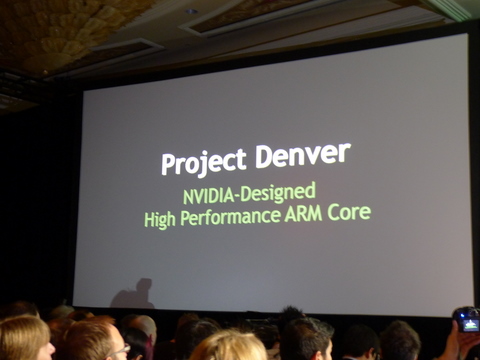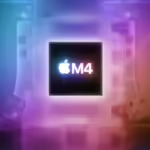Nvidia’s future runs through Denver … on a road paved by Microsoft
By Alex Herrera

At the Consumers Electronics Show (CES) this year, Nvidia kicked off Project Denver, the next System on a Chip (SoC) processor in Nvidia’s ARM-based Tegra line. Nvidia’s announcement grabbed a sizable chunk of the CES limelight, and it also rattled a few cages in the wider computing world. A long-term technology initiative, Project Denver pushes Nvidia’s existing Tegra-branded marriage of ARM CPUs and GPUs beyond low-power, relatively-low performance handhelds and mobiles to conventional PCs, servers and supercomputers. In a blog post, Nvidia’s CTO Bill Dally claims Project Denver will be powerful enough for servers, workstations, and PC clients.

Windows to ARM
Microsoft also came to CES with big news for the computing world. Steve Ballmer confirmed rumors that the next version of Window will support ARM processors, and that’s the real driver. Impressive in scope and ambition, Denver would nonetheless mean little without the accompanying, long-expected announcement from Redmond, confirming the software giant’s official plans to port. Without Windows support in place, a high-performance ARM for line-powered devices would remain an oxymoron.
Despite the fact that Nvidia says Denver chips could one day power workstations, Intel’s x86 currently owns the space. And while an ARM device tuned for high-performance client computing isn’t out of the question, it requires some heavy lifting. Nvidia will have to do some aggressive work on the microarchitecture “underneath” the instruction set architecture (ISA), and it will mean evolving the ISA (at the very least, 64-bit addressability).
Furthermore, portable or not, supporting multiple development environments and avoiding binary compatibility issues are — and always will be — stumbling blocks. Remember this isn’t the first go-around for Windows on non-x86, PC-class clients and servers (WindowsNT on Alpha, anyone?), and we learned that portable Windows was not the slam-dunk enabler many thought it would be. All true, and all good reasons why, if it’s my money, I wouldn’t bet on ARM-based workstations any time real soon.
But I’ll never say never — especially where Nvidia is concerned — and if I were to hear a prediction that 10 years from now, some ARM-derived CPU+GPU combination will have gained a solid foothold in the workstation space, I couldn’t refute it with any confidence. Just as in 1994 no one would have predicted that the next 15 years would see RISC CPUs, OEM-developed graphics, and Unix replaced by 64-bit x86, IHV-supplied graphics and Windows (with a bit of Linux sprinkled in).
HP, Dell must come aboard
A high-performance Windows/ARM client is viable, if over time Nvidia can garner support from a handful of key ISVs and just two OEMs (assuming they’re named Dell and HP). Have no doubt, OEMs — particularly in the workstation market where AMD has capitulated its small share, giving Intel virtual 100% ownership of platforms — would love to have a realistic alternative supplier (or two) for leverage. And it’s not like Nvidia will be alone in the fight, as many other suppliers would have similar interests in seeing the ARM platform grow beyond its current bounds.
But even if ARM never makes it to the workstation platform, the pairing of Windows-on-ARM and Denver will still stand to benefit the workstation market. And that’s because the two will give Nvidia a far wider playing field to ship its GPUs, whether those GPUs go out the door as highly-integrated, power stingy cores in some Denver/Tegra SoC or whether they ship as discrete CPUs in what today are Wintel dominated markets.
With the emergence of x86 CPU+GPU SoCs like Intel’s Sandy Bridge and Fusion, pessimists see the impending decline of Nvidia’s bread-and-butter discrete GPU. Now, whether a substantial decline is in the offing or not, there’s no denying the rising tide of these SoCs isn’t going to help Nvidia’s discrete GPU volume. But Windows-on-ARM changes the equation.
Forget high-performance clients and servers; for now, assume they’re gravy. Mainstream notebooks, netbooks and tablets are all obvious and very feasible targets for Denver. Those markets alone are huge and growing, more than enough to provide the volume to justify the increasingly large investments necessary to fund state-of-the-art graphics hardware development.
Ultimately, the impact of Windows-on-ARM + Denver on workstations might be dramatic, in the form ARM-based workstations down the road giving OEMs a legitimate alternative to Intel, or it might be more subtle, simply increasing Nvidia GPU volume to help sustain R&D investment in high-performance workstation-capable graphics. But either way, the impact of Microsoft opening new markets for ARM, dovetailing with Nvidia’s Project Denver initiative, is going to changes some games.
Alex Herrera is a Senior Analyst with Jon Peddie Research.





